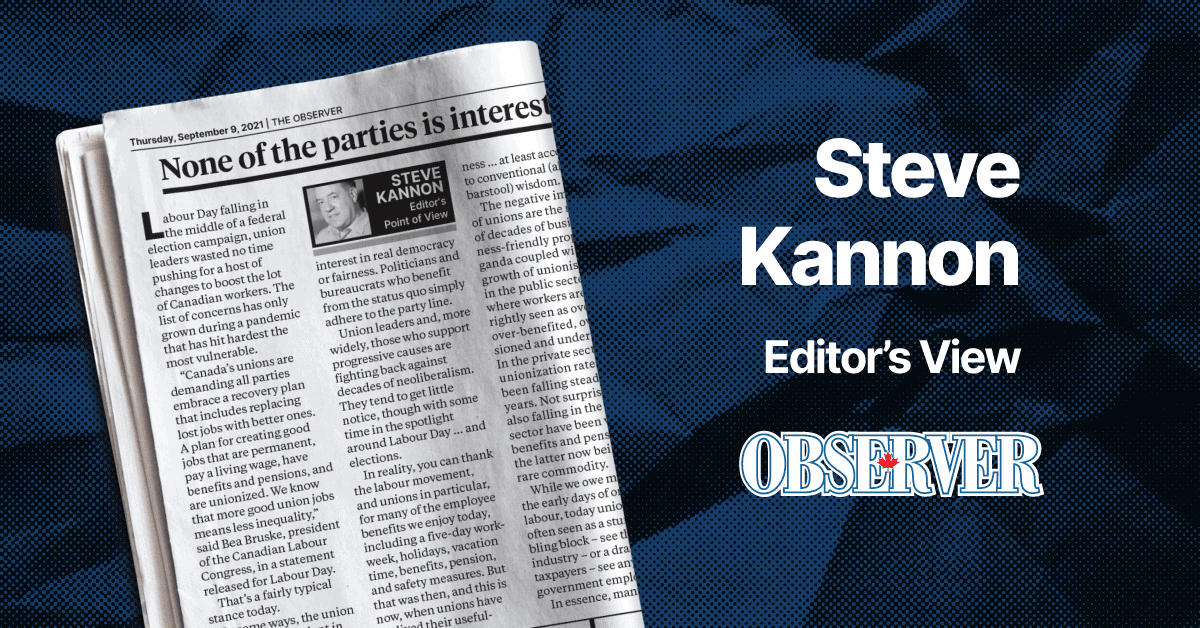The Victoria Day long weekend, which marks the unofficial start of summer, will provide yet more sticker shock to drivers filling up for an excursion.
Predictions are we’ll be travelling less this summer simply due to the cost. While that may warm the hearts of the environmentally conscious, it puts a damper on efforts to return to some kind of normal after two years of pandemic restrictions. The hospitality and tourism sectors will continue to struggle.
Beyond recreational downtime, soaring gasoline prices have led the way on massive inflationary pressures people face today. Across the board, rising costs are outstripping most people’s incomes.
While the oil industry puts the blame on Russia’s invasion of Ukraine, supply chain problems and related issues, record profits belie such claims. They’re not simply passing on their own increased costs.
Large producers are simply raking it in just now, with 28 of the largest reporting profits of US$93.3 billion in the first quarter of the year alone.
In Canada, Imperial Oil posted first-quarter profits of almost $1.2 billion, the most in some 30 years. Suncor’s $2.95 billion was up tremendously over $800 million a year earlier. Cenovus saw an even larger jump, to $1.6 billion from $220 million in the same quarter of 2021. Canadian Natural’s profits more than doubled to $3.1 billion.
Governments have done little to ease the burden. Ontario has moved to cut gasoline taxes, though with no guarantee that will help. The federal government is under pressure to rollback carbon taxes that are of dubious benefit, other than to its coffers, of course.
We’ve seen nothing here of US President Joe Biden’s call for prices to better reflect reality rather than profits, nor for proposals of a windfall tax on oil companies. There’s been talk, but little action.
Still, we like the idea of real downward pressure on prices. Real decreases would not involve, for instance, borrowing heavily to give people price cuts today in order to pass on the costs, plus interest, years down the line, as in the case of the former provincial government’s hydro-rate ploy.
Along with increasing the cost of filling up, there are indirect extra costs that ripple through the economy, starting with transportation costs.
Therein, of course, lies a longstanding issue in discussions about how we’ve routinely been pumped by the oil industry. The grief extends beyond those of us with cars – those heating their homes with oil have been experiencing price shocks in the vein of those suffered by electricity customers.
But more than that, we all suffer when the price of gasoline skyrockets: virtually all of the goods we purchase rely on fuel-powered transportation, at the very least, to get them to the stores.
Ultimately, the cost of gasoline has everything to do with the price of bread when you go shopping. And that is just the tip of the proverbial iceberg. Increased fuel costs have a ripple effect through the economy, touching us in a variety of ways.
While oil companies argue the ups and downs (mostly ups these days) of gasoline prices are purely market driven, they offer little evidence. Hikes are, in essence, supposed to be revenue neutral. But experience has shown that rising prices correspond to increased profits, as we’re seeing again now.
When gasoline prices go up, oil companies blame a host of reasons, some of them clear and others highly dubious, but always maintain that their margins are slim. They never reveal the extra profits tied to price hikes.
At the beginning of the manufacturing chain, the price of crude oil – those daily reports of fluctuations the world market, measured in US dollars per barrel – does matter. Most of the crude oil destined for our gas tanks costs no more to produce today than it did when gasoline was 30, 40, 50 cents a litre cheaper. You don’t have to do much math to see how that translates into fat profits.






